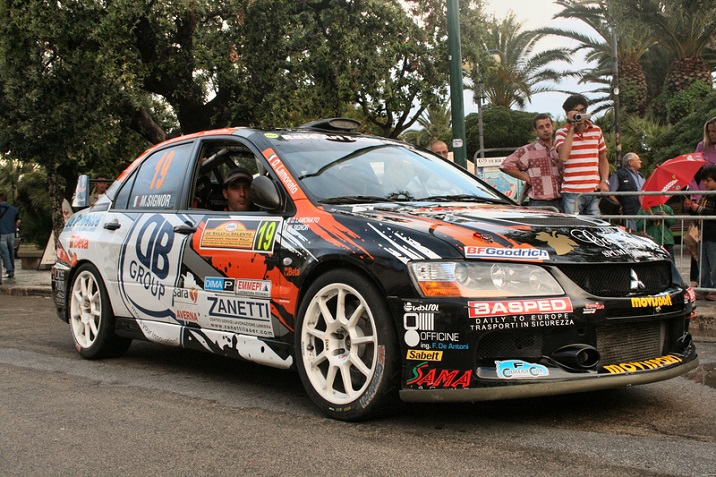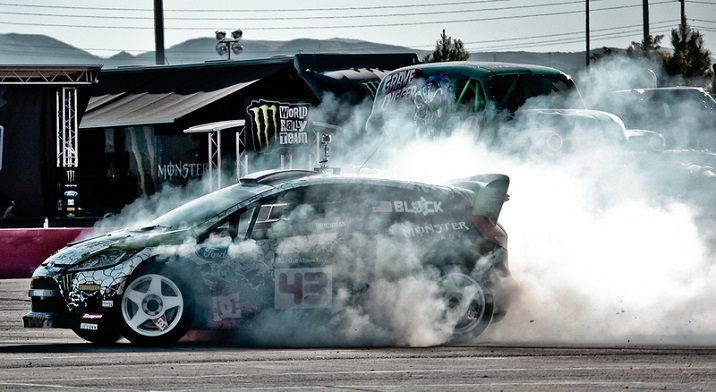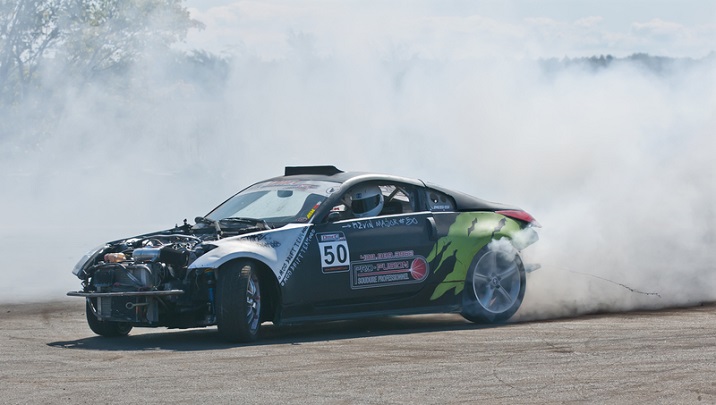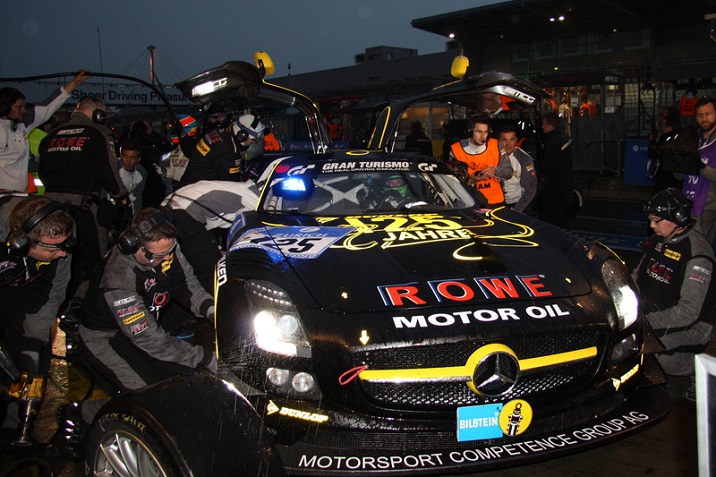
Gymkhana Grid - Quick Guide
Gymkhana Grid - Overview
Ken Block is regarded as the father of Gymkhana Grid whose driving videos went viral on Internet and created a huge public interest. His way of driving has created some modern standards which made the sport more popular. The sequence of driving are predetermined here. The driver has to remember the drift and to perform accordingly.
The objective of this sport is to race with other cars on the field with pre-determined speed drifts and sport plan. The cars must be equipped with high horse power and the driver must be equally quick enough to tackle the situation on awkward racing moments. Car that will clear all the rounds cutting off other cars on multiple rounds will be declared as the winner and will be eligible to get monetary award.

A Brief History of Gymkhana Grid
Ken Block is the co-founder of DC shoes. It was his childhood dream to become a motorcar driver. In 2005, he took it a little bit seriously and started to race. Upon completion of his first year he was awarded with Rookie of the year and thats what made him to think about this sport more seriously.
Soon he started to participate in more X-Games in America and started bagging medals. In 2010, he decided to take this sport to a global platform by creating a monster world rally team. The team was transformed into Hoonigan racing division in 2013.
To make it more popular, he made some road shows and put videos of his team performance on internet. This gave his idea an overnight success. In 2014, he completed many rally. Now the sport is gaining popularity, Ken is planning for Gymkhana seven dropping very soon.
Gymkhana Grid Championships
Gymkhana has very less championships in its name. The list of some popular championships under this sport are as follows −
- Gymkhana Grid Championship
- Japan Gymkhana Competition
- European Gymkhana Gauntlet Championship
- Supercar Contest
Participating Countries
Gymkhana Grid is a booming sport and currently on its way of getting a widespread popularity. Though the sport has attracted millions of views on internet and people are equally crazy to see it live, the participants have not gained that much acquaintance with the course of driving for this yet.
The countries in which the sport has gained popularity are Japan, America, England, France, Spain. As it has not got that much commercial success yet, it is still in the phase of adding new countries to its decorum each year.
Gymkhana Grid - Equipment
As gymkhana grid is an extreme sport and has many risk factors associated with it, so all the equipment should be compliant with National Hot Rod Association standards and procedures. Equipment should be comfortable enough to enrich the performance of the racer. In this chapter, we will discuss about the equipment used in the sport.
Hans Device
This is a combination of helmet and shoulder structure that will keep the driver safe and intact during the journey.
Fire-proof Suits
The work of this suit is to protect the player from any unwanted fire hazards and sponsors stamp their ads on this too to showcase their brand.
Fire-proof Gloves
It is better to wear such gloves as hands may get burning sensation sometimes due to overheating of the cars equipment while driving.
Fire-proof Boots
These boots are strong enough to protect the player from fire and comfortable enough to enhance the performance of the player.
Restrictor Plates
These are used for the safety purpose in the sense that if cars will hit it on boundary lines, they will slow down.
Vehicle Specification
The vehicles should not have any device which notifies or prevents the racers car from spinning in case the car is under power. The vehicles should be manufactured either in Japan, North America or European Union and it should have a vehicle identification number.
All the vehicles should look presentable, clean, and free of damage and should be identified clearly. Any supplement Restraining system should be removed from the vehicles such as airbag.

All aerodynamics which are vertical are permitted except two wing end-plates and two wing standoffs. Any installation of these items should not obstruct the viewing angle of the vehicles such as signalling light, indicator or even obstruct the operation of the safety device.
Battery − The battery should be placed securely and the positive terminal should not be contacting with any of the metal parts.
Body parts − Any parts such as wings, side skirts, and body panels etc. which are aftermarket parts should be according to the vehicle specifications. All the O.E.M or original equipment manufacturer replacements shall be approved by the Chief Technician before getting installed.
Body work − All the body work must be covered with something or painted. It should be affixed nicely and should not be hanging loosely.
Door − All the doors and rear window should be of OEM or Lexan with at least a minimum thickness of 3mm. The latch or lock of the outside door can be modified or removed. If the door is not in the original place, then it should be at least operable from outside and can be opened quickly for safety purpose.
Engine − The engine should be leak free and run with maximum efficacy. The engine can be modified but it should be free from any leaks, and the engine should have power supply all the time and on board starter.
Exhaust − Modification of Exhaust system are not permitted.
Playing Environment
Gymkhana Grid is not an ordinary racing sport. It is very dangerous sport because a player has to drive the car in many extremities. Fires and deadly devices are common. So it is a pre-requirement that the playing environment must be an open field far away from public places.

Adequate security and safety measurements are taken to ensure the protection of viewers. Therefore barricades are made and the galleries are made at a very safe distance from the playing arena. No person is allowed to be inside the field while the match is going on.
Gymkhana Grid - Eligibility
A player must satisfy the following criteria to be eligible to compete in this sport:
The racer must be at least 18 years old and have a driving license.
The racer have to give proper satisfaction to the organization (Monster Energy) that the player has proper experience, skills, and competency factor and attributes.
The racer should have proper evidence of participating in races and sports related to gymkhana.
The racer should have the proper insurance of the vehicle which is going to be in the race.
The racers have to fill up the registration form of the participating events. All the competitors of FBS will be allowed to participate in the Spanish round. All the positions of the events in the races are in first-come-first-serve basis except the Spanish round, in which all the spots will be first given to the FBS competitors and then to the other participants.

Before participating, all the participants will have to sign a release paper in which they agree to all the rules and conditions of the race. Any breach in the rules and failure to complete any form will be subject to disciplinary actions.
How to Play Gymkhana Grid?
The race comprises of two sets: Qualifying Rounds and Showdown.
Qualifying Rounds
Time Trial Stage
This is a stage in which the judgement is done on the basis of time in which a racer completes a circuit. The accuracy and driving skills are also determined.
Head to Head Elimination
All the sixteen competitors who scored the highest in the time trial stage will compete in the head to head elimination round. They will compete with each other until only two of the participants are left. The participants will get score on the basis of their driving skills, time taken to complete the circuit and their accuracy.
Third/Fourth Playoff
Both the players from the head to head elimination round will compete with each other and their scores will be judged individually according to the time taken to complete a circuit by the exhibiting their driving skills and the accuracy in which they complete a circuit. They score will determine the third and fourth placed competitors in the qualifying round.
Qualifying Round Final
The two participants who were not eliminated in the head to head elimination round will compete with each other and they will be judged by the same criteria on which the third and fourth rank racers were judged. The scores will determine the winner as well as the runner up. A trophy will be awarded to all the competitors who got placed in the first, second, and third place.
Finalist
The competitors of the first and second place will compete in the Showdown.
Showdown
Final Elimination
Each of the finalist will compete in a head to head round in which they will compete directly with one another. The highest scorer will move on to the next round.
Final Play off
The two finalist from the final elimination round will compete with each other and will be judged by the rules and will move on to the next final round.
Grand Final
The two finalist from the final play off will be competing with each other and the participant with the highest score will be declared as the winner and the other will be declared as the runner up.

Reserve
A reserve can only compete in the race when a player cannot race due to disqualification or in case his/her vehicle is not capable for the race. The participant can only race by getting the permission from the Monster Energy. The reserve can watch the whole match free of cost.
Briefing
The Chief Steward of the sport will brief about the information and rules to all the participants and the technical support before each event. Anyone did not attend the briefings may be subjected to disciplinary actions or even disqualification from the competition. Each participant has the right to raise any question in any issues and he/she must ask the chief steward to hold a meeting and the chief steward will decide the time and venue for the meeting.
Five Minutes time out
The chief steward will get a 5 minute time break to repair any damaged vehicles. The five minute break will not be allowed to any competitor if the chief steward believes the break as a strategy. It will also not be allowed in time trial stage unless requested by the technical support or the competitors to the chief officials.
If a competitor fails to repair the vehicle within the allotted time then he will be disqualified and the winning position will be passed to the opposing competitor. Any competitor will only get one 5 minute timeout throughout the event. None of the vehicles are supposed to be serviced during the final or qualifying rounds. The service includes tire chance, suspension change, fuelling, and other service.
Gymkhana Grid - Flag Signals
All the colors are used to give a signal to all the participants in the sport. The flags should be of cloth, lights or of coded boards.
Green Flag
It means the track is clear and the sport can be commenced or can be resumed. Sometimes even the national flag of the host can also be displayed instead of green.
Yellow Flag
It means that there may be some blockage in the race course and the racer may be racing in extreme caution and may even slow down a bit or be prepared to change the directions. Overtaking during this time is strictly forbidden.
Red Flag
This sign is used when the race is stopped. During this time, the competitors are not supposed to overtake and are advised to stop immediately with caution.
White Flag
Diagonal red lines on white indicates that the competitor is either at the start or at the finish line of the race course.
Black and White Checker
Black and white checker flag indicates the completion of the race.
Gymkhana Grid - Scoring
The scoring of the race is based on the time of the completion of the circuit, driving skills, and accuracy while completing the circuit.
Real Time
It is the overall time taken by a competitor to complete a race.
Time Penalty
Each time a competitor hits an obstacle in the circuit, a three second time penalty will be issued against the contestant by the chief of scoring.
DNF (Did Not finish)
A DNF is allocated to the competitors if he/she
Redirects the vehicles in the wrong direction of the field.
Spins or stops the vehicles in between the race course when it is not officially directed.
If all the tires of the vehicles are outside of the race course.
Formula for calculation for a competitors score −
A = B + (C*D)
Where A is the Competitors score, B is the Real Time, C is the Time Penalty, and D is the total number of time penalties.
DNF allocated racers score less than the racer who are not allocated DNF.
When DNF is not allocated to a racer, then the score is calculated on the numeric value and the lesser value is considered as better.
If both the competitor is allotted a DNF, then both of their scores will be calculated by eliminating their DNF and calculated by their numeric value.
Faulty Vehicle
Sometimes a vehicle loses control, goes off the circuit, drastically reduces or increases its speed, spins out of track and even sometimes gets into contact with competing vehicles. The chief steward shall decide the circumstance under which a vehicle will be deemed as at fault. If both vehicles collide and cause damage, then both the vehicle will get a right for 5-minute timeout.
If the damage is not repaired in the allotted time due to aggressive damage then the vehicle not at fault will be allowed additional time. (This doesnt nullify the 5 minutes timeout for other purpose.) The chief steward has the right to continue the round. The chief steward will reassess the vehicles after the race and if the vehicle is irreparable and the participant is not guilty then the competitor may be declared as the winner.
Gymkhana Grid - Rules
All participant and support technicians must adhere to the following rules and guidelines −
Maintain a decent and calm persona with the officials.
Be well behaved with all the people in the competition and to take care of themselves and the others in the race while participating in the race.
Abide by the rules and regulations of Monster Energy.
Respect the decision made by the officials of the event.
Check that all the forms and other formalities are done before entering the event.
Log in the injury list when met with an accident.
Attend all safety programs.
Inform the officials in case the health or safety of a participant or technical support is endangered and should not continue.
Have their own technical support and should abide by all regulations and rules.
Not use narcotics, performance enhancement drugs, or any recreational drugs.
Not bring any illegal objects to the competition.
Not copy or reproduce logos or trademark of monster energy as used in the sport.
Disciplinary Actions
If the Chief Steward or The President feels at any moment that the sport is not going on according to the set guidelines, they can declare it as a Breach. Some of the conditions for breach are as follows:
Bribing anyone in the completion
If a participant is known be to ineligible but still participates
Reckless driving during competition
If the direction is not obeyed by the participants
If the participants did not cooperate, interferes and obstruct the competition
Didnt obey the probation period
Intentionally harm a contestant or any other person.
If a participant didnt allow inspection to the vehicles.
Gross misconduct.
Other disciplinary actions are as follows −
Penalties − Penalties will be given if any one violates these terms. The authority will access the violation and will penalize accordingly.
Reprimand − The participants can be reprimanded and it will be noted in their license file.
Lifetime Ban − A lifetime ban can also be imposed on the participants based on their level of breach.
Expulsion − The president may expel the competitor.
Suspension of Privileges − If any participant will be found guilty in terms of breaching rules then chief steward can bar him from the competition up to 12 months.
Disqualified − The person who will be disqualified will withdraw all awards and privileges from the sport.
Probation − In case of probation of privileges, the chief steward will give that in writing and by signing. The notice about the probation will be send within the 7 days after the imposition of the probation.
Loss of points − The points of an event will be withdrawn if applicable by the chief steward.
Consecutive Penalty − Combination of penalties such as two suspensions of 30 days each resulting 60 days of suspension or even a fine and a penalty of time at the same time.
Amendments of awards − In case of disqualification and withdrawal of scores, the chief steward will decide if the next participants should be presented the award or not.
Penalty publication − Monster Energy has the full authority to publish any penalty and the reasons behind it.
Safety Measures
All participants are required to wear helmet during the race and it should not be removed during the race. All the helmets should be checked by the technical chief. All the participants should wear adequate shoes, trousers, and long sleeves so as to cover all the skin of their body.
Any skin part not covered should be applied with fire resistant material. The use of gloves depend upon the participants discretion. All the eyewear or goggles must be ensured by the safety standard of Europe.
Gymkhana Grid - Roles of Officials
The president has the ultimate power of the governance. The president will check the rules and regulations throughout the event. If there is any misrepresentation, misinterpretation or wrong implementation of the sport, then the president will have the final say in the situation without any consent.
All the events will be filled with official staffs. Any of the staff shouldnt have any conflict with the participants, organizers, technical support, or any sponsors, thus clear them for impartial standard over the event.
All the officials are supposed to be well-behaved and impart their best standard and conduct throughout the competition.
The roles and duties of the officials are as follows −
Chief Steward
The chief steward is below the president. He reports directly to the president. The chief steward has the responsibility for general tasks such as managing the area of gymkhana grid, observe the sport while the competitors are on the track, holds all official duties and check all the scores which were provided by chief of scoring.
Chief of Scoring
The main work of the chief of scoring is to check the score board, distribute scores and end results of the players. The chief of scoring will also compile and distribute the results officially after getting the signal from the chief steward that all the process has been completed.
Technical Chief
When it comes to technical inspection, the Technical Chief has the rights and power to determine and enforce all matters related to that. He/she can amend or can modify any rules related of technical aspects. All the participants will be informed of the changes.
Marshals
There are four marshals to ensure that the race is going on according to the rules and they report it to the chief of scoring.
Registrar
The registrar has the responsibility to check the credentials of the participants, officials, and technical officials before they enter the race.
Starter
The competitors have to follow the instructions of the starter. The starter can start his instructions after the vehicles become ready to start the race. The star directly reports to chief steward.